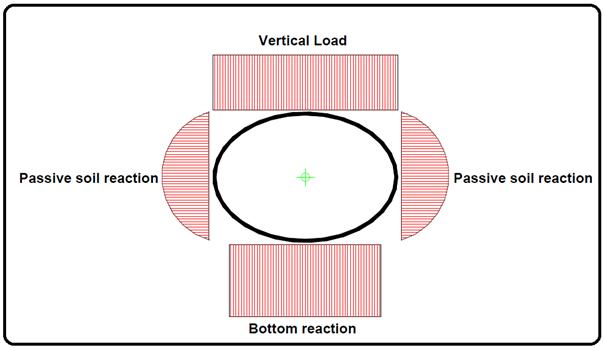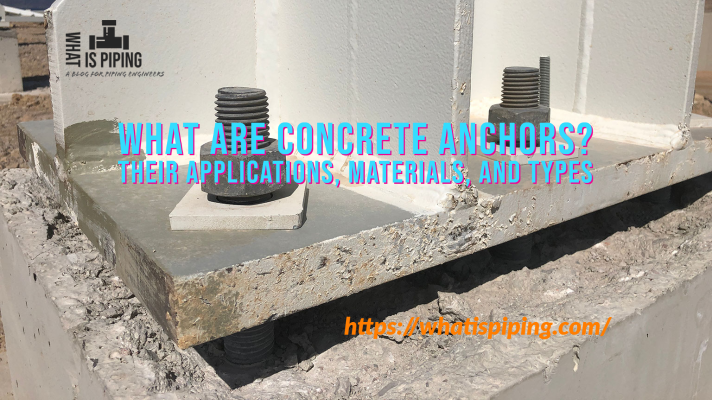Grouting is an essential technique widely used in civil construction for various applications. It involves the injection of a fluid material, known as grout, into spaces or voids in concrete, masonry, or soil. Grouting serves multiple purposes and offers several benefits, making it an indispensable technique in the construction industry. In this article, we will explore the intricacies of grouting, its processes, types, characteristics, applications, and advantages.
What is Grouting in Civil Construction?
Grouting refers to the process of filling voids, gaps, cracks, or spaces in construction materials, such as concrete or masonry, with a fluid material called grout. It aims to enhance the structural integrity, stability, and durability of the construction elements.
Purpose of Grouting
The primary purpose of grouting in civil construction includes:
- Improving the load-bearing capacity of foundations or structures.
- Stabilizing soil or rock formations.
- Sealing cracks and joints to prevent water ingress.
- Anchoring structural elements.
- Filling voids to enhance the overall structural integrity.
- Repairing damaged or deteriorated concrete.
Process of Grouting
The grouting process typically involves the following steps:
- Preparation: Clean the surfaces to be grouted thoroughly, ensuring the removal of debris, loose particles, and contaminants.
- Mixing: Prepare the grout mixture according to the manufacturer’s instructions, considering the required consistency and strength.
- Injection: Inject the grout mixture into the voids or cracks using pressure grouting techniques, such as gravity-fed, hand-pumped, or mechanical injection methods.
- Curing: Allow the grout to cure and gain strength as per the recommended curing time.
How to do Grouting in Concrete?
Grouting in concrete involves injecting grout into cracks, voids, or joints to restore structural integrity. The steps for grouting in concrete are similar to the general grouting process mentioned above. However, it is crucial to select the appropriate type of grout for concrete, such as epoxy or cementitious grout, based on the specific requirements of the project.
Grouting Work for Tiles
Grouting in tile installations refers to the process of filling the gaps between tiles with a suitable grout material. It serves both functional and aesthetic purposes, as grout prevents water penetration, reduces tile movement, and enhances the overall appearance. Tile grouting typically involves mixing the grout, applying it to the gaps using a grout float, and then cleaning off any excess grout from the tile surface.
Types of Grouting Materials
- Cementitious Grout: Composed of cement, sand, and water, cementitious grout is commonly used for general construction applications. It offers good compressive strength and is available in various formulations for different purposes.
- Epoxy Grout: Made from epoxy resins and hardeners, epoxy grout provides excellent chemical resistance, high strength, and durability. It is often used in areas with high chemical exposure, such as commercial kitchens or industrial facilities.
- Urethane Grout: Urethane grout is a flexible and water-resistant grouting material suitable for applications where some movement or vibration is expected, such as exterior tiling or areas prone to temperature fluctuations.
- Non-Shrink Grout: Designed to resist shrinkage during the curing process, non-shrink grout is commonly used for grouting heavy machinery, anchor bolts, or structural elements that require high load-bearing capacity.
- Microfine Cement Grout: Microfine cement grout is a fine particle-size cement-based grout that offers high penetration into narrow cracks and voids. It is commonly used for soil stabilization, ground improvement, and sealing leaks in underground structures or tunnels. Microfine cement grout has excellent permeation properties and can be injected into fine fractures to improve the stability of soil or rock formations.
- Bentonite Grout: Bentonite grout is a mixture of bentonite clay and water. It is primarily used for sealing and water-cutoff applications. Bentonite grout expands when hydrated, forming a gel-like substance that effectively fills voids and prevents water infiltration. It is commonly used in construction projects involving tunnels, underground structures, or retaining walls to create impermeable barriers.
Characteristics of Grout
Grout possesses several important characteristics, including:
- Flowability: Grout must have the appropriate viscosity to flow easily into voids or gaps.
- Strength: The grout should develop sufficient strength to support the intended loads and maintain structural stability.
- Durability: Grout should resist degradation from chemical attacks, moisture, and other environmental factors.
- Adhesion: Grout must adhere well to the surrounding surfaces to create a solid bond and prevent water infiltration.
- Compatibility: Grout should be compatible with the materials being grouted and not cause any adverse reactions.
G1 and G2 Grout
G1 and G2 grout are common classifications used in the mining and tunneling industries to specify the flow characteristics of grout materials. G1 grout has a relatively high viscosity and is suitable for applications where minimal grout spread is desired. G2 grout, on the other hand, has a lower viscosity and is used when increased grout spread is required.
Selecting Grouting Material
Selecting the right material for grouting is crucial to ensure the effectiveness and durability of the grouting application. Here are some factors to consider when choosing a grouting material:
- Project Requirements: Evaluate the specific requirements of your project. Consider factors such as the type of structure, the purpose of grouting (e.g., load-bearing, sealing, anchoring), environmental conditions, and expected loads or stresses on the grouted area.
- Compatibility: Ensure that the grouting material is compatible with the substrate and surrounding materials. Different grout types have varying chemical compositions and properties, so it is important to select a material that will adhere well to the surfaces being grouted and not cause any adverse reactions.
- Strength and Durability: Assess the strength requirements of the grouted area. Consider the expected loads, stresses, and environmental conditions to determine the appropriate strength characteristics of the grout material. Some applications may require high compressive strength, chemical resistance, or resistance to freeze-thaw cycles.
- Flowability: The flow characteristics of the grouting material should match the specific requirements of the project. Some applications may require highly fluid grouts that can penetrate narrow cracks or reach remote areas, while others may require thixotropic grouts that remain in place on vertical surfaces.
- Setting Time and Curing: Consider the setting time and curing characteristics of the grout material. The setting time should provide enough working time for proper injection and placement, while the curing time should align with the project schedule and allow the grout to develop the desired strength before being subjected to loads or environmental factors.
- Chemical Resistance: Evaluate the chemical resistance properties of the grout material, especially in applications where exposure to chemicals, moisture, or corrosive substances is expected. Some grout materials, such as epoxy grouts, offer excellent chemical resistance compared to cementitious grouts.
- Cost and Availability: Consider the cost-effectiveness and availability of the grout material. Assess the material’s price, including any additional costs associated with mixing, application, and curing. Ensure that the chosen grout material is readily available, either through local suppliers or manufacturers.
- Manufacturer’s Recommendations: Consult the manufacturer’s technical data sheets and recommendations for the grout material. Manufacturers often provide detailed information about the material’s properties, application guidelines, and limitations, helping you make an informed decision.
- Professional Advice: If you are unsure about the most suitable grout material for your project, seek guidance from experienced professionals or grouting specialists. They can provide expert advice based on their knowledge and experience.
By carefully considering these factors and conducting proper research, you can select the most appropriate grouting material that meets your project’s requirements, ensuring the long-term effectiveness and performance of the grouting application. Fig. 1 below shows some typical grouting processes.

Grouting Injection Methods
Grouting injection methods refer to the techniques used to introduce grouting materials into voids, cracks, or spaces in construction materials. The selection of an appropriate injection method depends on factors such as the nature of the project, the characteristics of the grouting material, and the accessibility of the grouting area. Here are some common grouting injection methods:
Gravity Flow:
Gravity flow injection is the simplest and most basic method of grouting. It involves pouring or allowing the grouting material to flow under gravity into the targeted void or crack. This method is suitable for horizontal or vertical applications where the grout can naturally flow into the desired areas.
Hand Pumping:
Hand pumping is a manual injection method that involves using a handheld pump to inject grouting material. The grout is loaded into the pump, and pressure is applied manually to push the grout into the void or crack. Hand pumping is often used for smaller-scale applications or in areas where access is limited.
Mechanical Injection:
Mechanical injection methods use specialized equipment to inject grouting materials. Common mechanical injection methods include:
- Piston Injection: Piston injection utilizes a hydraulic or pneumatic pump to generate pressure and force the grouting material into the voids. It is a versatile method suitable for various grouting applications, including soil stabilization, crack repair, or concrete repair.
- Injection Packers: Injection packers are mechanical devices that are inserted into pre-drilled holes in the structure. They create a sealed connection and allow the grout to be injected under pressure. Injection packers are commonly used for injecting grout into cracks, joints, or voids in concrete structures.
- Jet Grouting: Jet grouting involves high-pressure jets of grouting material that are directed into the ground to create columns or walls of compacted soil cement. It is often used for soil stabilization, ground improvement, or the creation of retaining walls.
Permeation Grouting:
Permeation grouting, also known as permeation or compaction grouting, is a method where low-viscosity grouts are injected under low pressure. The grout permeates the surrounding soil, filling voids and compacting loose or weak areas. Permeation grouting is commonly used for ground improvement, soil densification, or stabilizing loose soils.
Curtain Grouting:
Curtain grouting involves creating a grout curtain or barrier to prevent water infiltration. It is achieved by injecting grouting material along a specified path or perimeter. Curtain grouting is used in applications such as waterproofing tunnels, dams, or underground structures.
Preplaced Aggregate Grouting:
Preplaced aggregate grouting is a method used for large voids or rock fissures. It involves pre-filling the voids with aggregates and subsequently injecting the grout to fill the void spaces around the aggregates. This technique is commonly employed in rock formations or areas with significant voids.
The selection of the grouting injection method depends on factors such as project requirements, accessibility, desired grout distribution, and the characteristics of the grouting material. It is important to consult with experienced grouting professionals to determine the most suitable injection method for a specific application.
What is Compensation Grouting?
Compensation grouting is a specialized technique used in geotechnical engineering to mitigate ground settlement or heave caused by construction activities. It involves injecting grouting material into the ground to compensate for the anticipated ground movement, and maintaining the desired level or alignment of adjacent structures.
The purpose of compensation grouting is to balance the effects of excavation, tunneling, or other construction processes that induce ground movements. These ground movements can lead to settlement or heave, potentially affecting the stability of nearby structures, infrastructure, or the surrounding environment. Compensation grouting helps to minimize these effects and ensure the safety and integrity of the surrounding area.
The process of compensation grouting typically involves the following steps:
- Monitoring: Before construction begins, a thorough geotechnical investigation and monitoring program is conducted. This involves assessing the soil conditions, measuring ground movement, and determining the potential impacts on nearby structures.
- Design: Based on the monitoring data and analysis, a compensation grouting design is developed. This design specifies the injection locations, injection depths, grout type, injection pressures, and timing.
- Injection: Grout is injected into predetermined locations using specialized equipment, such as grout pumps and injection pipes. The grouting material is injected under controlled pressure to fill the voids or gaps created by the ground movement. The injection process is closely monitored to ensure that the desired grout distribution is achieved.
- Monitoring and Adjustments: The injected grout is monitored continuously to assess its effectiveness in compensating for ground movement. If necessary, adjustments may be made to the grouting program, such as altering injection volumes or locations, to optimize the compensation effect.
Compensation grouting can be performed using various types of grouting materials, including cementitious grouts, chemical grouts, or combinations of both. The selection of the grouting material depends on factors such as the soil conditions, the desired degree of control, and the specific project requirements.
Applications of compensation grouting can vary widely and include tunneling projects, deep excavations, mining operations, or any construction activity that may induce ground movements. By proactively injecting grout to counteract the expected ground displacements, compensation grouting helps to maintain the stability and safety of adjacent structures and infrastructure.
It is important to note that compensation grouting requires careful planning, monitoring, and expertise to ensure its effectiveness. Qualified geotechnical engineers and grouting specialists should be involved in the design, execution, and monitoring phases of compensation grouting projects to achieve optimal results.
What is Compaction Grouting?
Compaction grouting is a ground improvement technique used to stabilize or densify loose or weak soils. It involves injecting a low-slump, low-viscosity grout into the ground under high pressure. The grout displaces the surrounding soil, compacting it and increasing its strength and load-bearing capacity.
The primary objective of compaction grouting is to improve the engineering properties of the soil, enhance its stability, and reduce settlement or ground movement. It is commonly used in situations where loose or weak soils are unable to support the loads imposed by structures or where ground improvement is necessary to mitigate potential settlement issues.
What is Rock / Fissure Grouting?
Rock or fissure grouting is a specialized technique used to improve the stability and integrity of rock formations by injecting grout into fractures, joints, or fissures within the rock mass. It is commonly employed in geotechnical engineering, mining, tunneling, and other underground construction projects.
The primary objectives of rock or fissure grouting are to reduce water inflow, enhance rock mass strength, control ground movement, and increase the overall stability of the rock formation. By injecting grout into the fissures or fractures, the grout fills the voids, seals off water flow paths, and reinforces the rock mass.
Applications of Grouting
Grouting finds extensive applications in civil construction, including:
- Foundation underpinning and soil stabilization.
- Repair and rehabilitation of concrete structures.
- Tunneling and mining operations.
- Anchoring of bolts, dowels, or reinforcement bars.
- Waterproofing and sealing of cracks, joints, or masonry walls.
- Tile and stone installations.
Advantages of Grouting
The advantages of grouting include:
- Enhanced Structural Integrity: Grouting reinforces the structural elements by filling voids, cracks, or gaps, thereby improving their load-bearing capacity and overall stability.
- Increased Durability: Grouting helps protect construction materials, such as concrete or masonry, from moisture intrusion, chemical attacks, and other environmental factors, thus enhancing their durability and longevity.
- Improved Waterproofing: By sealing cracks and joints, grouting prevents water infiltration, reducing the risk of damage caused by moisture and maintaining the integrity of the structure.
- Enhanced Aesthetics: In tile installations, grouting not only provides functional benefits but also enhances the visual appeal by filling the gaps between tiles and creating a clean, finished appearance.
- Flexibility and Versatility: With various types of grouts available, including cementitious, epoxy, urethane, and non-shrink grouts, grouting offers flexibility to meet specific project requirements and address different construction challenges.
- Cost-Effective Solution: Grouting is a cost-effective method for repairing and rehabilitating structures, as it can help avoid the need for more extensive repairs or replacement of entire elements.
- Reduced Downtime: Grouting processes can be completed relatively quickly, minimizing the downtime of the structure or area being grouted. This is particularly advantageous in industries where time is of the essence, such as mining or commercial construction.
- Environmentally Friendly: Many grout materials are formulated to be environmentally friendly, with low volatile organic compound (VOC) emissions and minimal impact on the surrounding ecosystem.
Additional Information
- Quality Control: Proper quality control measures, such as testing grout materials, monitoring injection pressures, and ensuring proper mixing and curing, are essential to achieve the desired results and ensure the longevity of the grouting applications.
- Professional Expertise: Grouting techniques and processes can vary depending on the specific project requirements. Seeking the assistance of experienced professionals in grouting can ensure the proper selection of grout materials, precise application techniques, and adherence to industry standards.
- Maintenance: Regular inspection and maintenance of grouted structures are crucial to identify any signs of deterioration, such as cracks, leaks, or grout loss. Timely repairs or re-grouting can prevent further damage and ensure the ongoing performance of the structure.
Grouting Cleaner
Grouting cleaner refers to a cleaning solution or product specifically designed for the cleaning and maintenance of grouted surfaces, such as tiled floors, walls, or countertops. The grouting cleaner is formulated to effectively remove dirt, stains, grime, and residues that accumulate on the grout lines over time.
Grouting cleaner typically comes in liquid form and may be available as a ready-to-use spray or concentrate that requires dilution with water. The specific composition of grouting cleaner can vary depending on the brand and product, but it generally contains a combination of surfactants, detergents, solvents, and sometimes mild acids or bleaching agents.
The purpose of grouting cleaner is to restore the appearance of grout lines, remove discoloration, and eliminate bacteria, mold, or mildew growth. It is important to regularly clean grout lines to maintain their original color, prevent staining, and ensure the longevity of the grout.
When using a grouting cleaner, it is advisable to follow the manufacturer’s instructions and take the following steps:
- Preparing the Surface: Remove any loose dirt or debris from the grout lines using a soft brush or vacuum cleaner. This helps ensure that the cleaner can penetrate the grout effectively.
- Applying the Grouting Cleaner: Spray or apply the grouting cleaner directly onto the grout lines, covering the desired area. Alternatively, if using a concentrate, dilute it with water as per the instructions and apply the solution to the grout lines using a sponge, brush, or mop.
- Agitation: Allow the grouting cleaner to sit on the grout lines for the recommended dwell time specified by the manufacturer. During this time, you may need to lightly scrub or agitate the grout lines using a soft brush or scrub pad to help loosen dirt and stains.
- Rinse: After the dwell time, thoroughly rinse the grout lines with clean water. This helps remove the cleaner and any loosened dirt or residues. For best results, ensure that all traces of the cleaning solution are completely removed.
- Drying and Sealing (optional): Allow the grout lines to dry completely. If desired, you can apply a grout sealer to protect the grout from future staining and make future cleaning easier.
It is worth noting that certain grouting cleaners may be specifically formulated for different types of grout, such as cementitious or epoxy grout. Therefore, it is important to select a grouting cleaner that is compatible with the type of grout used in your specific application.
Regular cleaning and maintenance of grout lines using suitable grouting cleaners help preserve the appearance, cleanliness, and durability of tiled surfaces, ensuring they remain attractive and hygienic over time.
How to Clean Grouting in Floor Tiles?
Cleaning grout in floor tiles requires some effort, but with the right tools and techniques, you can restore the cleanliness and appearance of your grout lines. Here’s a step-by-step guide on how to clean grout in floor tiles:
- Gather the necessary materials: You will need the following items for the cleaning process:
- Grout cleaner (commercial cleaner or homemade solution)
- Bristle brush or grout brush
- An old toothbrush or small brush for hard-to-reach areas
- Warm water
- Sponge or microfiber cloth
- Protective gloves (optional)
- Preparing the area: Clear the floor area by removing any furniture or obstacles. This will provide easy access to the grout lines and ensure thorough cleaning.
- Test the cleaner: Before applying the grout cleaner to the entire floor, perform a patch test in a small, inconspicuous area to ensure the cleaner doesn’t cause any adverse effects on the tiles or grout.
- Apply the grout cleaner: Spray the grout cleaner directly onto the grout lines, covering the targeted areas. Alternatively, if using a homemade solution, prepare the mixture according to the instructions and apply it to the grout lines.
- Allow the cleaner to penetrate: Let the grout cleaner sit on the grout lines for the recommended dwell time specified by the manufacturer. This allows the cleaner to loosen dirt, stains, and grime.
- Scrub the grout lines: Use a bristle brush or grout brush to scrub the grout lines. Apply moderate pressure and scrub in a back-and-forth motion along the lines. Focus on one small section at a time to ensure thorough cleaning. For stubborn stains or tight spaces, use an old toothbrush or small brush to target those areas.
- Rinse with warm water: After scrubbing, dampen a sponge or microfiber cloth with warm water and thoroughly rinse the grout lines. Rinse the sponge or cloth frequently to avoid spreading dirt back onto the grout.
- Dry the floor: Use a dry microfiber cloth or towel to remove excess moisture from the floor. Ensure that the grout lines are adequately dried.
- Optional: Apply a grout sealer: If desired, after the grout lines have completely dried, you can apply a grout sealer to protect them from future staining and make future cleaning easier. Follow the instructions on the sealer product for proper application.
Regular maintenance is key to keeping your grout lines clean. To prevent excessive dirt buildup and staining, sweep or vacuum the floor regularly and wipe up spills promptly.
Note: When using commercial grout cleaners, be sure to follow the manufacturer’s instructions and safety precautions. Some cleaners may require proper ventilation or the use of gloves.
By following these steps and maintaining regular cleaning practices, you can keep your grout lines in floor tiles clean and looking their best.
Conclusion
Grouting plays a vital role in civil construction, providing structural reinforcement, waterproofing, and aesthetic enhancement. With various grout types and application methods available, it is essential to choose the most suitable grout material and technique for each project. By understanding the purpose, process, types, and advantages of grouting, construction professionals can effectively utilize this technique to ensure the durability and integrity of their projects.








